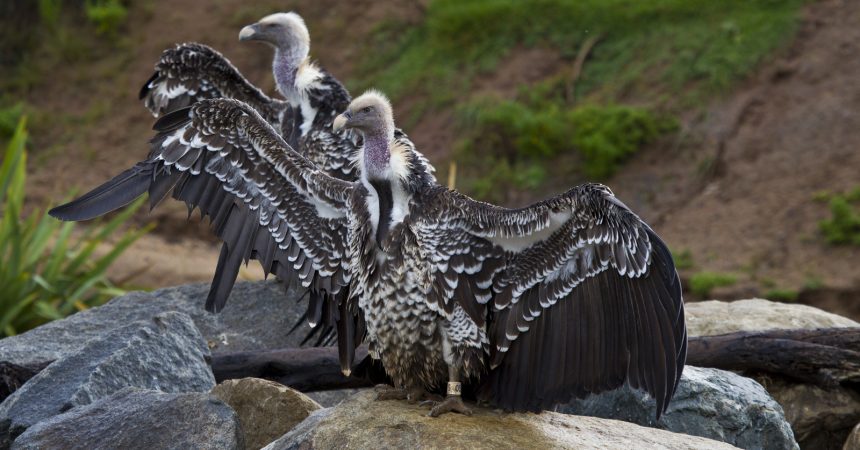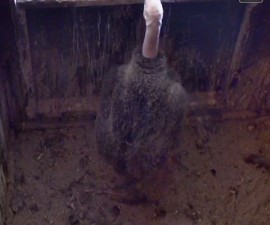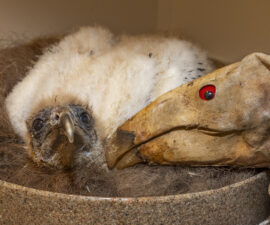As people learn about vultures, they’re usually impressed to discover how large and strong they are, but they are always astonished by these birds’ truly remarkable immune system. Vultures can digest and are resistant to many deadly pathogens. Yet, when folks hear that the world’s vulture species are endangered, they wonder, “What causes such a large, strong, durable animal to become endangered?”
Every species has a mortality rate (rate at which members of a population die) and a corresponding replacement rate (how fast members are replaced). If either rate is altered too abruptly, it can lead to an imbalance in the population. If the mortality rate increases but the replacement rate stays the same, the result is a population drop—and if this imbalance goes on for too long, it can lead to extinction. Keep in mind, it is not the actual change that makes a species become endangered, it is how fast it occurs.
Anything that increases the mortality rate so quickly that the replacement rate cannot keep up can threaten populations of even “durable” animal species. Vultures have a low reproductive rate, and in the past they have had a low mortality rate, too. But that has changed in recent years, unfortunately. There are many different causes for an increased mortality rate in these birds today, but also some hope—and you can help.
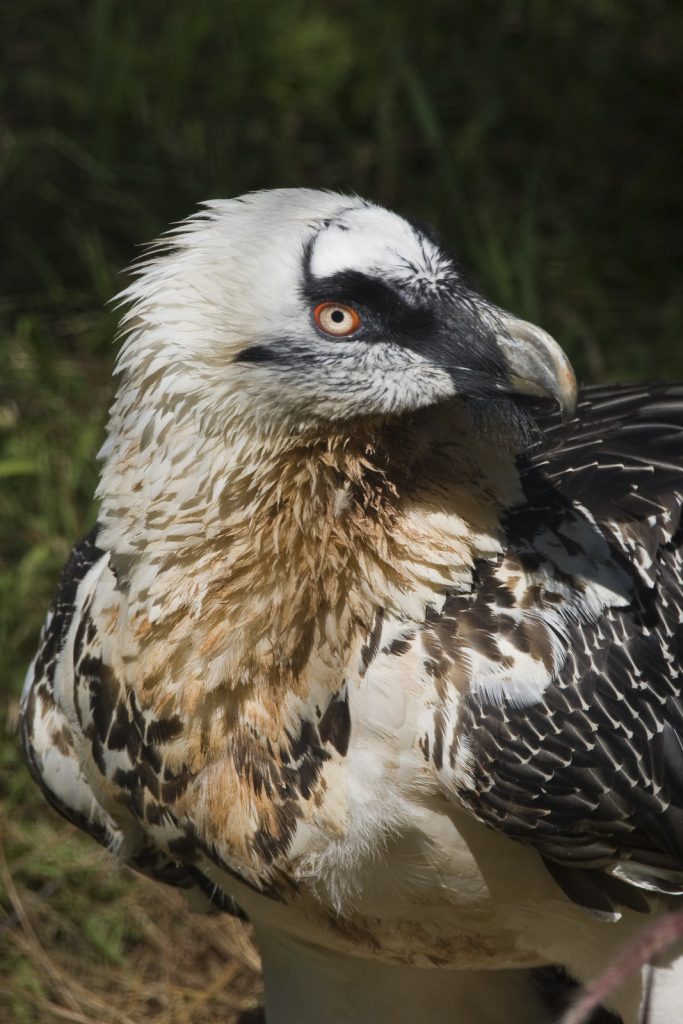
Eurasian bearded vulture Gypaetus barbatus
Lead Poisoning—Vultures are scavengers. They don’t hunt for their food; they find and eat animals that have already died. Sometimes the animals they eat have been shot by humans. Usually, the bullets are made from lead, which is a toxic, heavy metal. When a lead bullet hits its target, it shatters and fragments are scattered throughout the meat, poisoning whoever eats it. This is a major threat to California condors, but it also affects any other animal that scavenges, including bears, eagles, wolves, and hawks—and even humans!
Solution: Switch to lead-free ammunition. Hunters, ranchers, and pest control technicians who use lead-free ammunition can greatly decrease mortality due to lead poisoning, thus making these activities more sustainable and responsible.
Wind Turbines—Wind power is a popular form of “green” energy. Unfortunately, collecting the wind can be hazardous to birds, especially big birds, like vultures. Birds fly in areas of high wind—and that’s also where we place our wind turbines. See the problem? Wind turbines are responsible for 140,000 to 328,000 bird deaths each year, not to mention the hundreds of thousands of bats that are also killed.
Solution: Support research, legislation, and technology that increases the efficiency of wind turbines, while also increasing the safety of our airborne wildlife. Some new forms of turbines have shafts that turn around a vertical axis. Others have towers that “wobble” back and forth, generating energy.
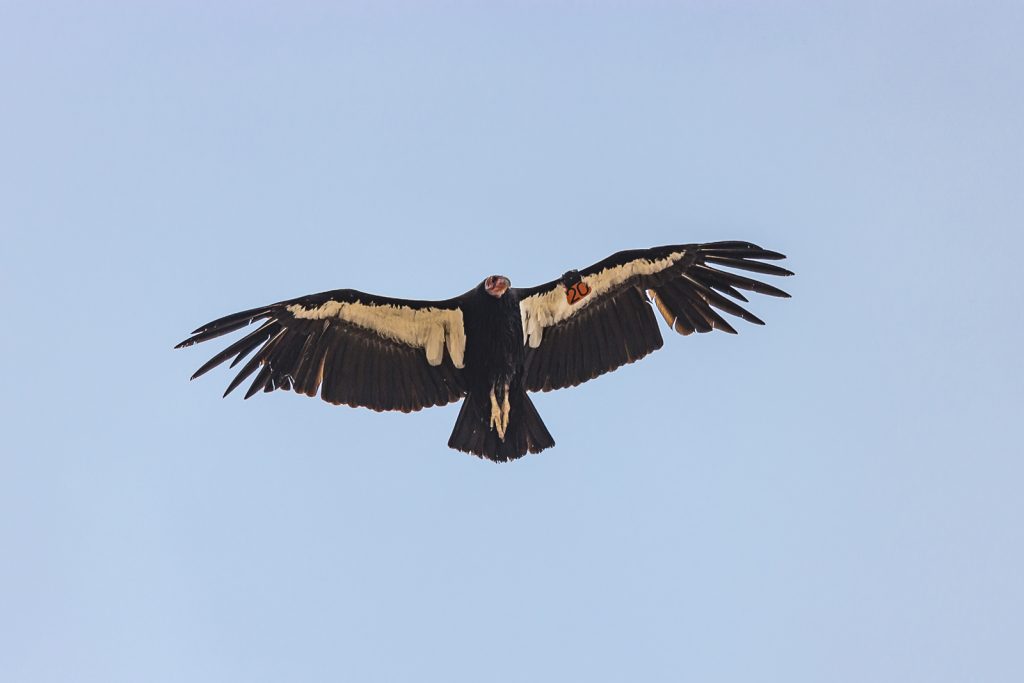
The wingspan of a California condor is nearly 10 feet wide!
Power Lines—Power lines are a hazard for large-winged birds, for two reasons. A bird can safely touch only one power line at a time. Eagles and vultures have such large wingspans, they can accidentally bridge the gap between power lines, touching two lines—resulting in electrocution. Second, birds are at risk of colliding with power lines, which breaks bones or severs limbs. Collisions usually are the result of birds not being able to see the cables in time (kind of like us walking into a closed screen door!).
Solution: Utility companies are helping to make progress in this area. They often make power poles more difficult to land on, forcing birds to use safer perches and roosts. They also hang “flappers” on the lines, making them easier to see and avoid. In some areas, lines are buried underground, completely eliminating any hazard.
Poisoning—Accidental poisoning has greatly decreased many Asian vulture species. In the 1990s and 2000s, the population of Asian white-rumped vultures was reduced by 99 percent due to an antibiotic used in livestock. The vultures were poisoned when they scavenged dead cattle. Currently, in certain parts of Africa, there is another massive die-off of vultures linked to accidental poisoning. Pastoral farmers poison carcasses in an effort to protect their livestock from predators, like lions or hyenas. Poachers have also begun poisoning carcasses, because they know game rangers use vulture sightings to help find illegal kills. Because vultures eat in large groups, over 180 vultures can be killed at a single poisoning event!
Solution: Find and support organizations that are working in Africa and Asia to help reduce vulture mortality through research, animal care, local legislation, and public outreach/education.
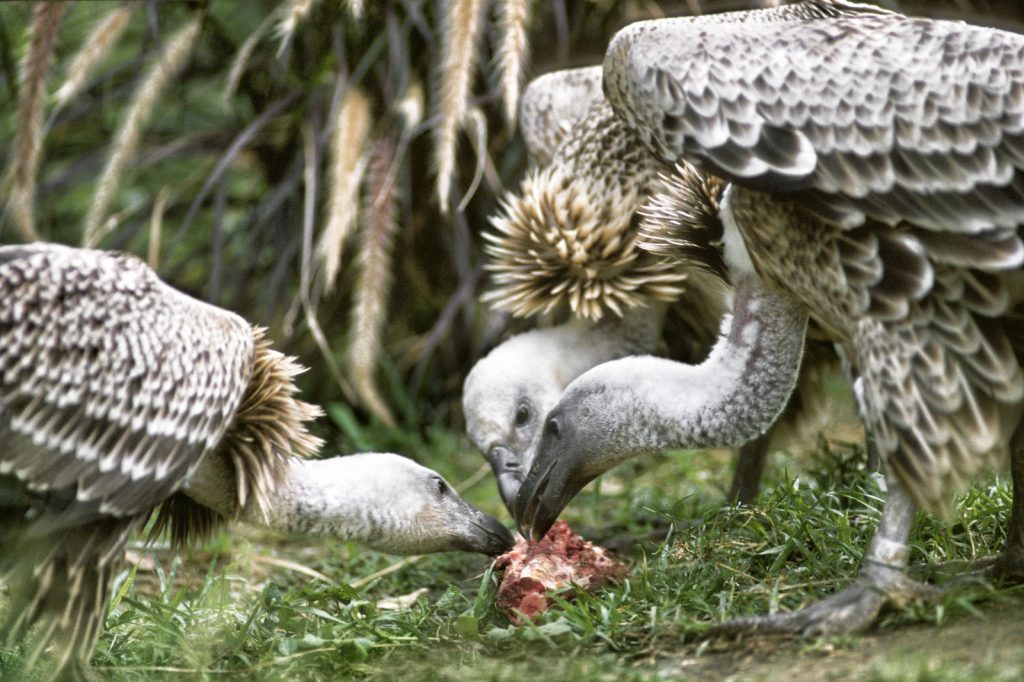
Most vultures are communal feeders.
Traditional Medicine—Animal parts are used in traditional medicine in western and southern Africa. Approximately 29 percent of the vulture deaths recorded continent-wide can be attributed to this secretive trade; vulture heads, eyes, and feet are sold in traditional markets.
Solution: Support organizations that are working in Africa to help reduce vulture mortality through public outreach/education, and that are sensitive to the traditional culture. Research before purchasing any products containing animal material or plants, to determine whether your purchase would be harmful to those species.
Combating extinction can be a daunting task, but with research, determination, and cooperation, together we can help stop the decline of our world’s vultures—the majestic but misunderstood masters of the air!
Ron Webb is a senior wildlife care specialist at the San Diego Zoo Safari Park.

